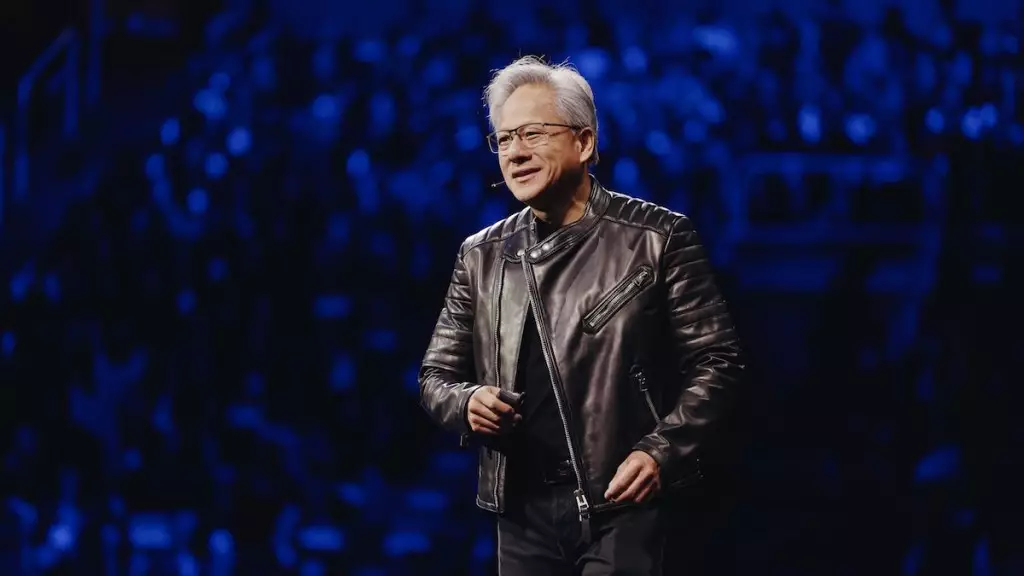The landscape of artificial intelligence is undergoing a seismic transformation, characterized by the thrust into billion-parameter models which leverage vast computational power to develop intelligent agents capable of working autonomously and performing complex tasks. At the forefront of this revolution is NVIDIA, as its founder and CEO Jensen Huang delineated in his recent keynote at the GPU Technology Conference (GTC). The acceleration from training AI systems to deploying them in full production is spurring unprecedented demand for data center capabilities, ultimately redefining what these centers must achieve in terms of efficiency and output.
As organizations focus on creating AI-driven applications that can address millions of user queries simultaneously, NVIDIA’s innovations are emblematic of a new era in technology. By positioning AI data centers as high-capacity factories, the company acknowledges the monumental financial opportunity lying within this paradigm shift, which Huang estimates could be worth an astonishing $1 trillion. This untapped potential necessitates cutting-edge advancements, and NVIDIA’s responses at GTC have showcased its commitment to meeting these explosive demands head-on.
Revolutionary Developments: Blackwell and Beyond
Central to NVIDIA’s strategy is the introduction of the Blackwell Ultra AI platform, alongside an operating system meticulously engineered for AI factories. Blackwell represents a monumental leap in performance — an astounding 40 times boost compared to its predecessor, Hopper — and promises to enhance both AI model training and inference. This leap forward not only solidifies NVIDIA’s standing as a leader in computational innovation but also serves to significantly streamline AI applications, making them far more scalable and accessible.
As we look toward the future, the promise of the “Blackwell Ultra”— set to release in the latter half of 2025—cements NVIDIA’s trajectory to continually refresh its AI architecture. Such advancements ensure that the company remains agile in adapting to the ever-evolving demands of AI development. With the planned introduction of Vera Rubin in 2026 and subsequent iterations, NVIDIA is not just responding to market needs, but actively anticipating them.
The Expansive Nature of AI Opportunities
While NVIDIA is primarily recognized for its graphics processing units (GPUs), it has its sights set on a much larger horizon. Huang has identified the opportunity in physical AI across diverse sectors such as manufacturing, logistics, and healthcare, amounting to a staggering $50 trillion. This vast potential reflects an era where AI-powered automation can redefine conventional industry practices and lead to significantly more efficient operations.
NVIDIA’s Isaac and Cosmos platforms are trailblazers in this initiative, showcasing the company’s strategy to harness robotics and intelligence in everyday industrial applications. By focusing on the cross-section of robotics and AI, NVIDIA is positioning itself to reshape multiple sectors while addressing operational bottlenecks that have historically hampered growth.
The Networking Revolution: Photon and Quantum Innovations
A pivotal element of NVIDIA’s roadmap lies in its advancements in networking technologies, seen in products like the Spectrum-X and Quantum-X platforms. These revolutionary networking switches utilize silicon photonics to streamline the connectivity of millions of GPUs across data centers while dramatically cutting energy consumption. This merge of high efficiency and reduced operational costs is crucial for future-proofing AI factories, and represents a paradigm shift in how these centers will evolve.
The environmental implications of these innovations cannot be overstated. As businesses strive to adopt more energy-efficient practices, NVIDIA’s sustained focus on environmentally friendly technology aligns perfectly with market demands for sustainability. The forthcoming introduction of Quantum-X Photonics InfiniBand switches later this year reiterates the company’s commitment to leveraging cutting-edge networking to maintain a competitive edge.
The Blueprint for the Future: A Holistic Approach
The breadth of NVIDIA’s ecosystem, including its free, open-source Dynamo software, hopes to catalyze innovation further by enhancing multi-step reasoning processes within AI factories. This initiative reflects an understanding that true advancement in technology must be coupled with accessibility, ensuring that developers can cultivate new solutions without the traditional barriers to entry.
Additionally, NVIDIA’s anticipated collaborations—such as the development of the Newton Physics Engine with Google DeepMind and Disney Research—illustrate its intent to weave together various technological threads to create more adaptive, intelligent systems. This multifaceted strategy not only propels NVIDIA to the forefront of the AI narrative but encourages synergy within the broader tech community, fostering collaborative innovation across disciplines.
As we venture into the next phase of the AI revolution, NVIDIA stands as a beacon of ambition and technological prowess. The company’s comprehensive approach—merging hardware, software, and groundbreaking research—positions it as a pivotal player in shaping the AI-driven future that lies ahead.

